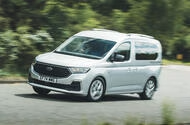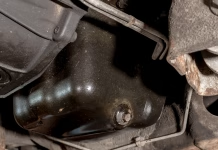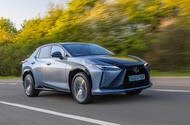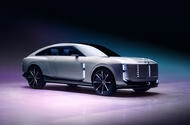2026 Lexus RZ Review Does It Measure Up to Leading Electric SUVs
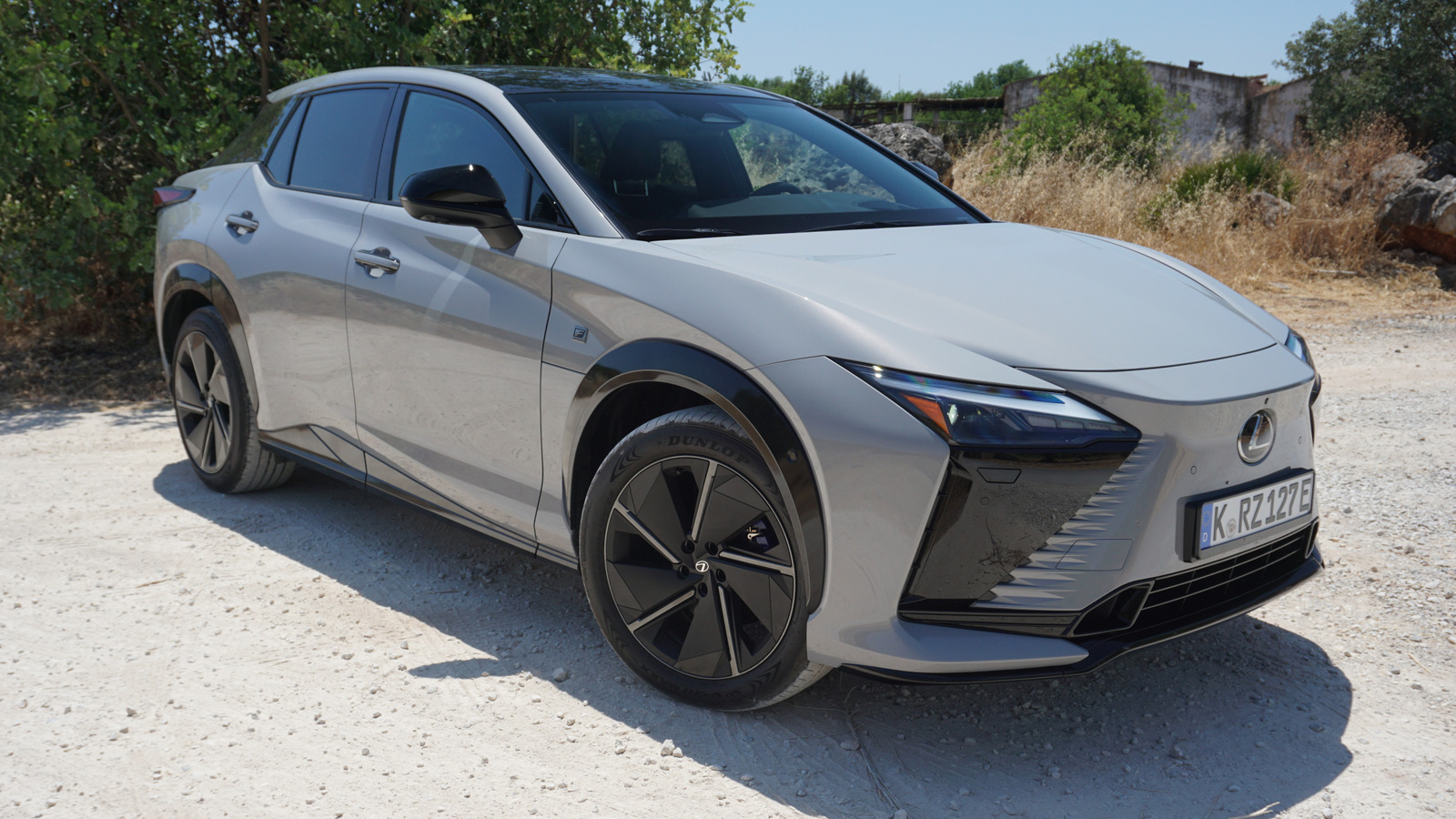
Ford Tourneo Connect Embraces Hybrid Power in a New Era of Family MPVs
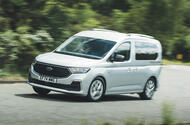 Ford turns to PHEV power for its mid-sized, VW-built monocab MPV As the fortunes of their opposite numbers from the Fast East have risen, European volume car makers have had it tough. While consolidation of ownership has given some a lifeline, others have simply found new ways to work together to adapt and survive.The joint venture on commercial vehicles between Ford and Volkswagen, announced in 2019, is an example. Ford engineered the current VW Amarok and manufactures it alongside its own Ford Ranger pick-up in South Africa. In return (as well as giving Ford access to its MEB electric car platform for the Explorer and Capri), VW engineered and produces Ford’s mid-sized ‘multi-activity vehicle’, the Ford Tourneo Connect, alongside its own Volkswagen Caddy in Poznan, Poland.But does the customer end up with the car they expect? That’s a question this road test will address, as the latest Tourneo Connect – powered by a Volkswagen PHEV powertrain – arrives in the UK.
Ford turns to PHEV power for its mid-sized, VW-built monocab MPV As the fortunes of their opposite numbers from the Fast East have risen, European volume car makers have had it tough. While consolidation of ownership has given some a lifeline, others have simply found new ways to work together to adapt and survive.The joint venture on commercial vehicles between Ford and Volkswagen, announced in 2019, is an example. Ford engineered the current VW Amarok and manufactures it alongside its own Ford Ranger pick-up in South Africa. In return (as well as giving Ford access to its MEB electric car platform for the Explorer and Capri), VW engineered and produces Ford’s mid-sized ‘multi-activity vehicle’, the Ford Tourneo Connect, alongside its own Volkswagen Caddy in Poznan, Poland.But does the customer end up with the car they expect? That’s a question this road test will address, as the latest Tourneo Connect – powered by a Volkswagen PHEV powertrain – arrives in the UK.Air Force Pauses Hypersonic Rocket Tests to Protect Pacific Seabirds

Top Electric Family Cars for Comfort, Range, and Everyday Driving
 For the best EV to fit effortlessly into everyday life and carry your family in comfort, look no further
For the best EV to fit effortlessly into everyday life and carry your family in comfort, look no further
As more drivers make the switch from fossil fuel to electric, it’s family cars that are proving the most popular.
With their more generous proportions, these do-it-all machines can accommodate a larger battery for a better range without impacting practicality. Which means you can avoid feeling stressed about journey distances and remaining charge levels each time you climb aboard.
Moreover, as the cost of EV technology continues to fall, it’s these family-friendly cars that benefit the most, because their higher production volumes allow manufacturers to really sharpen their pencils when it comes to pricing.
Perhaps even more importantly, for people like us at least, manufacturers are starting to inject some genuine driver appeal into these cars beyond the exciting but short-lived thrill of their instant, and often savage, acceleration.
So here’s our list of the best full-size family EVs you can currently buy. Our top pick is the BMW iX, which impresses with a winning combination of comfort, technology and good all-around driving dynamics.
How to Remove a Stripped Oil Drain Plug and Save on Car Maintenance
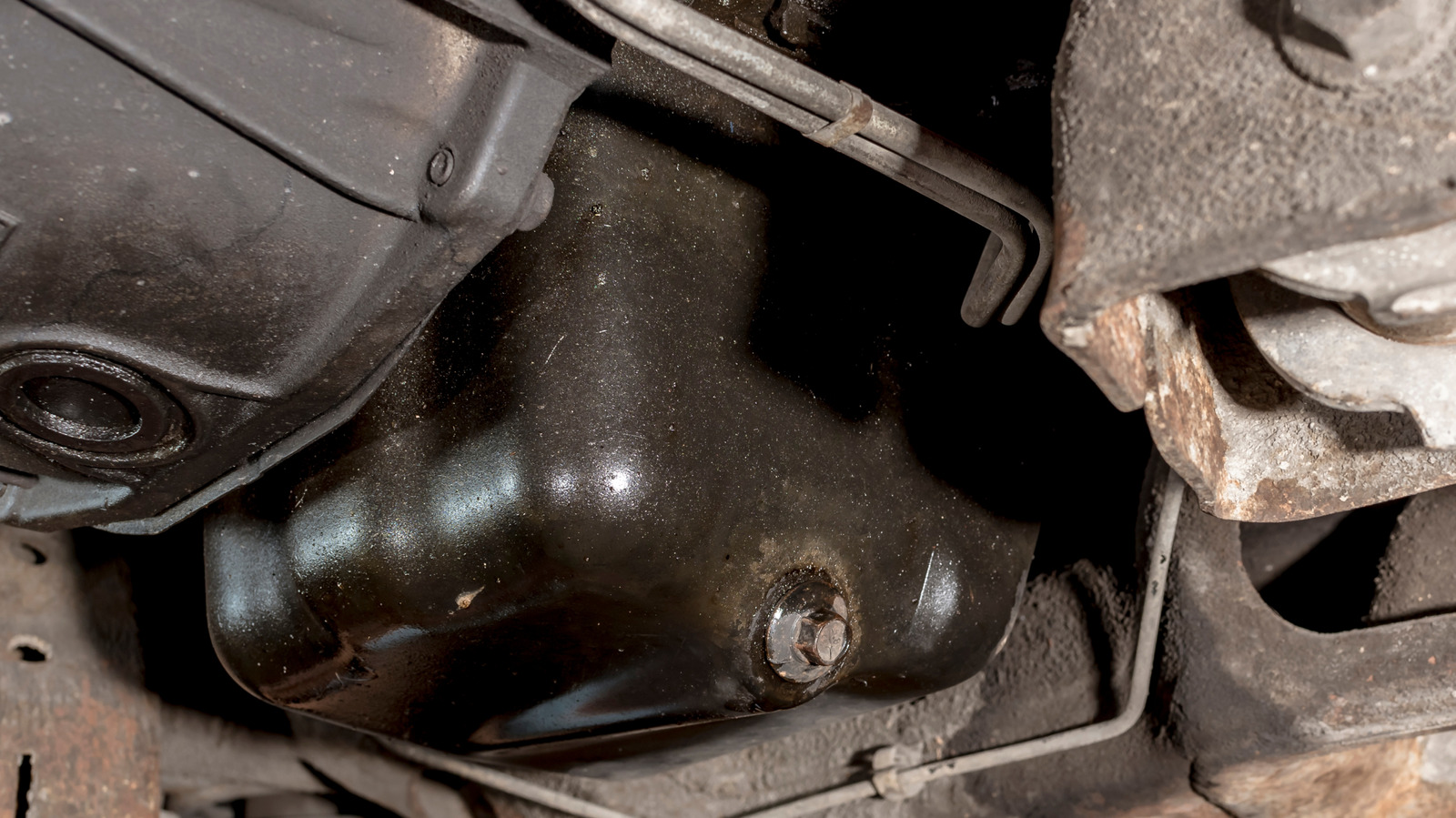
Lexus RZ Review: Elevating Electric Luxury with Comfort and Confidence
 Lexus addresses the key fl aw – and more – of its luxurious electric SUV With so many cars spuriously purporting to be sporty or have racing genes, it’s refreshing when the presentation for a new one hardly even mentions athleticism. The Lexus RZ is the firm’s flagship electric car, and instead it ought to offer “confidence, control and comfort”.Mind you, it still has up to 309bhp and will out-accelerate quite a few hot hatches.The RZ was Lexus' first step into getting serious about EVs. It had the UX 300e for a while, but that was never quite a heavy hitter, whereas this car is and goes toe to toe with the likes of the Tesla Model Y, Nissan Ariya and Hyundai Ioniq 5.The RZ shares its e-TNGA platform – which is bespoke to EVs – with the Toyota bZ4X and Subaru Solterra.A cheaper, front-wheel-drive model (badged 300e) joined the range in 2024 to address issues concerning range and price.
Lexus addresses the key fl aw – and more – of its luxurious electric SUV With so many cars spuriously purporting to be sporty or have racing genes, it’s refreshing when the presentation for a new one hardly even mentions athleticism. The Lexus RZ is the firm’s flagship electric car, and instead it ought to offer “confidence, control and comfort”.Mind you, it still has up to 309bhp and will out-accelerate quite a few hot hatches.The RZ was Lexus' first step into getting serious about EVs. It had the UX 300e for a while, but that was never quite a heavy hitter, whereas this car is and goes toe to toe with the likes of the Tesla Model Y, Nissan Ariya and Hyundai Ioniq 5.The RZ shares its e-TNGA platform – which is bespoke to EVs – with the Toyota bZ4X and Subaru Solterra.A cheaper, front-wheel-drive model (badged 300e) joined the range in 2024 to address issues concerning range and price.Aston Martin Vantage S Unleashed With Bold Style and Enhanced Performance

Aston Martin Vantage S Unleashed: Track-Ready Power and Precision Redefined
 Most potent series-production V8 Vantage yet brings track focus
Most potent series-production V8 Vantage yet brings track focus
Aston Martin has revealed the Vantage S, the third-generation sports car’s most track-focused incarnation to date.
It is the first time the S suffix has adorned a Vantage since 2018, and the new model follows the recently revealed DBX S as Aston brings back the badge for its highest-performing models.
While the 671bhp Vantage S is the most powerful series-production version of Aston’s entry-level sports car yet (disregarding the extremely limited V12 Vantage of 2022), attention has been focused specifically on making it as quick as possible on track.
To that end, engineers have worked to increase cornering speed and stability. Key to this is the fitment of a new ducktail spoiler, which has been tuned to push the overall downforce balance towards the front of the car. This is combined with new front and underbody aero to produce 111kg of downforce at top speed.
Alongside this, Aston has reworked the 4.0-litre twin-turbocharged V8 to deliver 671bhp while making the unchanged 590lb ft accessible higher up the rev range, where it is now produced between 3000rpm and 6000rpm.
The car’s power delivery software has also been modified, with the driveby-wire throttle tuned to be more responsive and allow for better feel. Combined, this delivers a launch control-enabled 0-60mph time of 3.3sec (0.1sec quicker than before) and a 0-124mph time of 10.1sec. Top speed is unchanged at 202mph.

While the car is 15bhp more powerful than before, that 0-124mph time is more than a second slower than that of Ferrari’s 631bhp Amalfi, the Italian car maker’s new entrylevel, Vantage-rivalling replacement for the Roma.
Vast aero additions aside, the Vantage S is marked out by S badging inside and out, special satin black 21in alloy wheels and new blade-shaped front air intakes.
Pricing for the new Vantage S is estimated to start at £170,000. Deliveries will begin in October.
Debunking the Myth That Immigrants Cause More Traffic

Bentley Unveils EXP 15 Concept, Redefining Luxury with Futuristic Electric Limousine
 Ultra-luxurious, Mulsanne-sized EXP 15 concept previews Bentley's electric line-up
Ultra-luxurious, Mulsanne-sized EXP 15 concept previews Bentley's electric line-up
Bentley has revealed a dramatic, high-riding limousine concept that previews the design of its upcoming cars – and it could evolve into a successor to the Mulsanne flagship.
Called the EXP 15, this 5.4m-long show car will inspire the shape and styling of the next generation of Bentley cars, beginning with its first EV, an ‘urban SUV’, which will be launched next year to sit underneath the Bentayga.
Straddling the boundaries between saloon, SUV and grand tourer, the EXP 15 takes design inspiration from some of Bentley’s best-known historic models but ushers in a futuristic new treatment that departs radically from the current Continental GT, Flying Spur and Bentayga.
It’s a statement of intent from recently appointed director of design Robin Page, who rejoined Bentley from Volvo in 2023, having previously served in Crewe’s interior design team for 17 years.
He told Autocar that his aim with the EXP 15 is to drastically evolve the company’s design hallmarks while remaining true to its most recognisable elements.
“It’s still in that linear line of Bentleys, but it’s a fresh start – a new design language,” said Page. “The point is to make a bit of a bang: next chapter.”
“It’s also given us a chance to try a new, modern design language – more monolithic, stronger and cleaner in its surfaces and not too over-complicated,” he continued, giving clues to the styling of Bentley’s initial wave of electric cars.
Bentley's new look

The primary aim of the new concept is to showcase five overarching design themes that will define the next-generation Bentley line-up – all five of which are inspired by one of the earliest Bentley GT cars: the 1928 Speed Six with bodywork by coachbuilder Gurney Nutting.
Better known today as the Bentley ‘Blue Train’ for its association with original ‘Bentley Boy’ Woolf Barnato, who won a race against the legendary ‘Train Bleu’ express from Cannes to London in 1930 with a Speed Six, that car showcases various definitive styling cues that Page has reinterpreted for the modern era.
First is the “upright elegance” of its front end, which is referenced in the new concept’s bluff, imposing face – a departure from the more angled visages of Bentley’s current cars.
Page said: “We started to lean things back, but what we see from the heritage cars is this strong vertical element and that gives it that kind of proud confidence that we want to capture on the front of our cars. What we’ve been relating it to is a horse. If you think of a thoroughbred horse coming to a stop, it has that upright, vertical chest.”
The more upright, monolithic face is at odds with the low-slung and heavily sculpted front ends that other firms are applying to their electric cars in pursuit of enhanced efficiency. But Page said Bentley is not out to claim any range records with its electric cars.
“We’re finding that there’s a sweet spot in terms of range. Our customers are basically telling us that 300-350 miles is that sweet spot. Beyond that, they’ll use the private jet,” he said.
The “endless bonnet line” is a key feature, too, and Page points to the slim, distinctively shaped daylight opening as one of the more obvious parallels between the old and new cars.

Meanwhile, the new-look rear end, with a prominent new light signature inspired by the firm’s ‘B’ emblem, is described as the “prestigious shield” and modelled on the rear luggage carriers affixed to Bentleys of old.
The fifth design theme common to future Bentley models will be the “resting beast” proportions showcased by the EXP 15 – with a long bonnet (here housing a sizeable frunk with a pair of 1930s-style, piano-hinged lids), a cab-rear silhouette and heavily accentuated rear arches.
“We relate this to a tiger having a strong shoulder when it’s laid down,” said Page. “It’s got power in the back legs.”
Although the EXP 15 is a dramatic departure from the current conventions of Bentley design, its creators have preserved some of the firm’s most important and recognisable features.
Page cites the grille-inspired front lighting design as a prime example: “We decided to keep the grille as being our main communication. In the past, the grille was all about getting air into the car. We don’t need that any more, so we created a piece of art.
The concept’s front end is dominated by a large section of cutaway diamond motifs, with a ‘crystal’-themed LED light display behind, giving a dynamic effect that changes according to the angle they are viewed from. The EXP 15 also swaps from a traditional circular headlight design to a slimline vertical arrangement that references the chrome strips on the wings of the old Speed Six.
Page said round headlights are effectively a hangover from a time when lighting technology wouldn’t allow for other shapes. “What we find is every time we did round lights, you get the retro signal. We just want to test the water to see how passionate people are about round lights,” he said.
Page has sought to avoid an overtly retro-inspired design, despite taking influence from Bentley’s past. “As soon as you start to duplicate,” he said, “you fall into the retro trap.”
He added: “What we’re getting from our customers and dealers is that we need to be more modern and progressive. We love the old cars, but at the end of the day we want to be the coolest kid on the block.”
EXP 15's first-class cabin

Uniquely for a full-sized luxury car, the EXP 15 features a three-seat layout, with the nearside passenger seat sliding fore and aft electrically on demand, and rotating 90deg when the doors open for a more elegant exit – an arrangement that harks back to the cockpit of Barnato’s famous continental cruiser.
“Barnato was a playful character: he liked to drive himself, but sometimes he wanted to have a whisky in the back. And he also had his girlfriend with him, and sometimes she would sit in the back. It was a very self-indulgent car,” said Page.
The concept also has picnic seats and a champagne cooler in the tailgate, a reverse-opening rear door on the passenger side and a central section of the roof that opens when parked so passengers can stand before getting out. Bentley has even designed a bespoke dog carrier that mounts in the passenger footwell.
“What we’re finding is that people love this idea of real luxury,” said Page, “and the dog is now a very important accessory.”
He said the aim with the EXP 15’s cabin is to ensure VIP passengers have the most dramatic entrance possible upon arrival at a prestigious destination.
“The idea is that the most important person sits in the rear, and when they arrive at an occasion, the two doors open, the seat twists around, the roof goes back and you get ‘the art of arriving’. That is the Instagram photo shot – someone arriving in style and that’s what we wanted to capture,” said Page.

Traditionally, outlandish features such as these remain the preserve of concept cars as designs progress through to production, but Page said “we’ve based it all around a viable package” in order to “gauge whether this is an interesting concept”.
Meanwhile, in the centre of the dashboard, where a large touchscreen is usually mounted, there is a prominent physical dial to control various in-car functions, with a small digital display housed within it that can show the state of charge or directional arrows for the sat-nav, among other functions.
“It’s like having a mechanical watch and a digital watch,” said Page, adding that Bentley is exploring new dashboard formats that aren’t centred around a traditional touchscreen, and emphasising its focus on analogue controls, which feature throughout the cockpit of the EXP 15.
“What we’re finding, especially at our end of the market, is that people are a bit bored with full-digital screens. What makes us premium is to keep a good level of mechanical detailing that the others can’t do,” said Page.
Will Bentley build it?

The EXP 15 was conceived first and foremost as a design showcase, but Page suggested that a positive reception to its genre-bending silhouette would strengthen the likelihood of a production version.
Asked if the EXP 15 could be readied for showrooms, he said: “It’s doable.”
The concept has been designed around “a viable package and platform, and these are mechanisms that exist. What we want to do is gauge whether this is an interesting concept,” said Page.
He stopped short of saying whether the EXP 15 had been conceived around a specifi c architecture, but a variation of the SSP ‘Sport’ platform that sibling company Porsche is using for its new upcoming SUV flagship, the K1 – a large, three-row SUV that will sit above the Cayenne – would be a logical fit for a production version.
If it does make showrooms, the EXP 15 would not replace any current model, but rather it would pick up where the Mulsanne limousine left off when it was retired in 2020 after a 10-year run – once again giving the Crewe firm a direct rival to the Rolls-Royce Phantom.
Before giving the green light, though, Bentley will closely monitor reaction to the EXP 15 concept in order to gauge the viability of offering a high-riding saloon in this vein.
Page said: “We know really well the GT market. We pretty much invented that market. That’s solid. We know our customers. We know what we want to do. Even in the luxury SUV market, we’re now pretty experienced.
“The one we’re curious about is the sedan… We’ve got a very successful Flying Spur. The question is: do we continue with that kind of proportioned car, or do we elevate it a bit more?”
There are no plans to dramatically reinvent the Continental GT (“people love it for that really amazing driving experience”) or the Bentayga (“its capability as an SUV is incredible”) in this vein. But Page said the market for luxury saloons is changing and the EXP 15’s unique shape could be the key to renewed success in that market.
“What we’re exploring here is: there is the traditional sedan, but is there something else out there?” he said. “People are starting all the time to want a more elevated seating position, and if you look at the trends, the SUV is constantly, always growing, and the sedan one is steady. So we’re just exploring if that’s an area that we’ve not tapped into.”
Q&A: Robin Page, director of design, Bentley

Have Chinese customers driven your focus on rear-seat comfort?
“We’re very successful with sedans in China – they love Flying Spur – so that’s definitely one area to connect with. The other thing is that our customers are changing. Even in the US, what’s important to them is how they arrive at the destination. This art of arrival is something that’s key at the premium level. They go to very exclusive events in order to arrive and be seen.”
So is there less of a focus on driver engagement?
“The 3 Litre is a car Woolf Barnato drove himself, but there was a need for him to have a drink in the back and a sideways seat. And that’s typical of our customers: they will drive the cars themselves. That’s the difference. Our customers love to drive, but there are occasions where they either want to impress someone and hence give them a really nice experience, or they want to arrive themselves at an event and be chauffeured – so it needs to do both.”
How will you balance physical and digital controls?
“For us, it’s a blend of the two together. We want people to be delighted by the physical and hidden details. But we still can’t just take out digital experiences, because they’re so amazing in terms of content and animations. You want to scroll through your music selection. You want to have the latest navigation system… And that’s a digital experience. But what we do is combine these two.”


